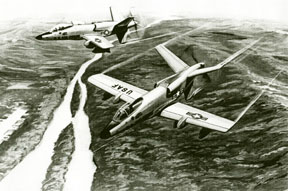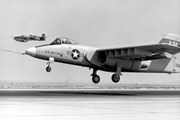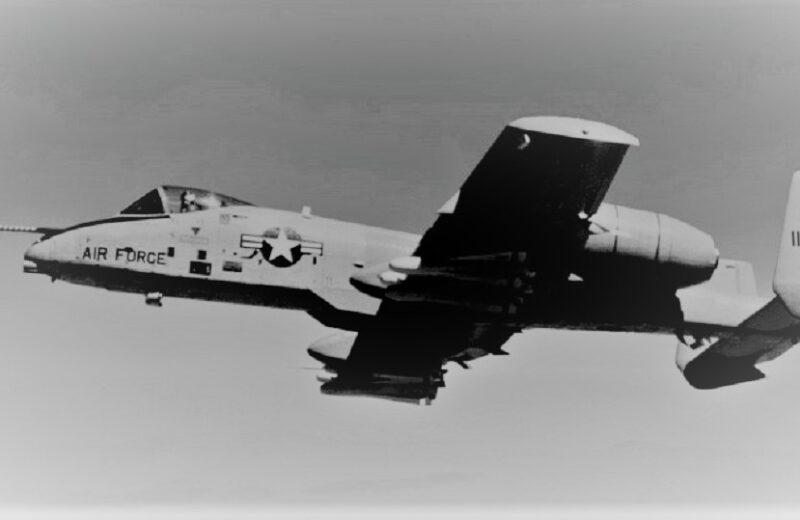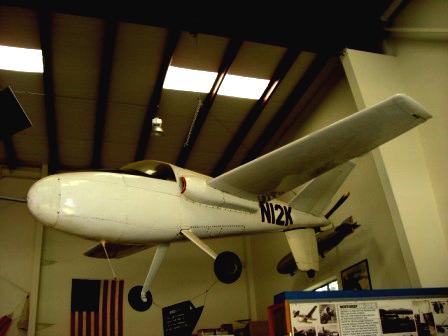Designed and flown by Ron Beattie and Walt Fellers, two North American Engineers who came to work for the Northrop Division. The aircraft was built by the Acme Aircraft Company (Sierradyne Inc.) Crawford and Keeney, at the Torrance Airport in late 1948. The first flight was on 23 November 1953. It was built according to Goodyear Racing Plane specifications. Although it was never entered in any races, extensive data was obtained during its many flights.

This experimental aircraft was built to investigate the advantages of a pusher propeller configuration. It has a “Y” shaped tail incorporating ruddervators on the upper fins, an unswept wing mounted midway up the fuselage, an engine mounted directly behind the cockpit, and large air scoops mounted in the forward end of both wing roots.
Artist’s conception of the Northrop A-9A
The aircraft was used by Sierradyne in the 1960’s to test and promote Northrop’s and Dr Werner Pfenninger’s boundary layer control concepts. Northrop used it as a flying technology demonstrator for the Air Force’s AX close-support aircraft design competition in 1972. The plane was never officially considered a Northrop aircraft.
S-1 Sierra Sue Specification
| Maximum speed | 173 knots (200 mph, 320 km/h) |
| Number Built | 1 |
| Wing Span | 29 feet 2 inches |
| Overall Length | 18 feet. |
| Empty Weight | 590 pounds |
| Number of Seats | 1 |
| Power plant | Continental C-85, 4 Cylinder air cooled horizontally-opposed, 85 hp engine |
This aircraft so influenced Lear, who after seeing Sierra 1, designed his rear engine business plane with the same “Y” tail and propeller.
The AX Competition led to the manufacture of two prototypes, Northrop’s A-9A and Fairchild-Hiller’s A-10A. After an extensive flight test program, the Fairchild-Hiller design won the competition.

Northrop A-9A
AX prototype

Fairchild-Hiller’s YA-10A
AX Prototype

